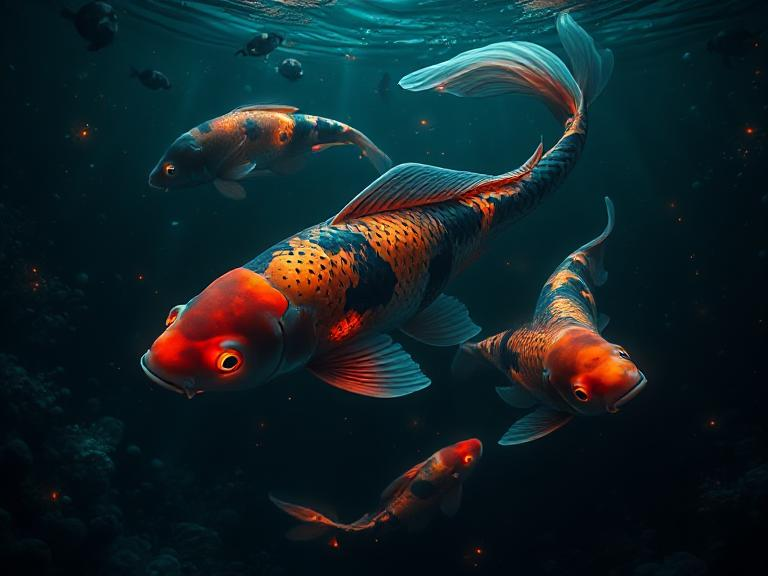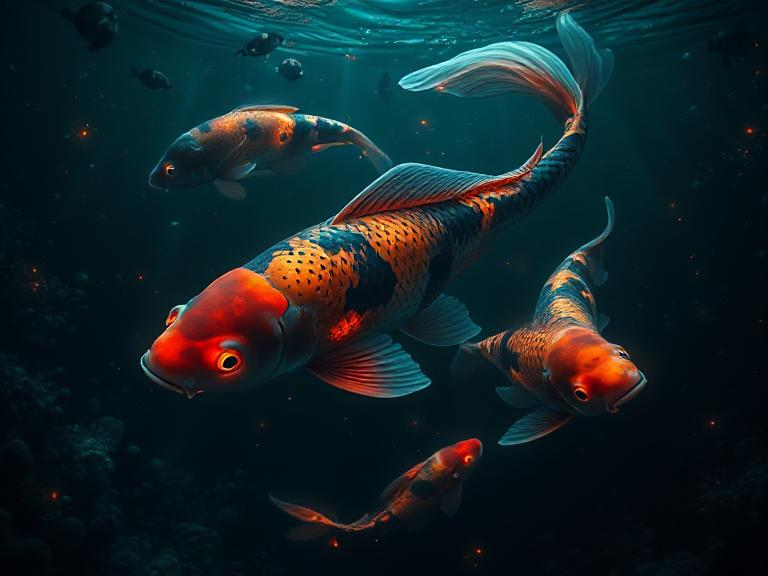
Koi breeding is a captivating aspect of keeping koi fish, allowing enthusiasts to create unique and beautiful variations. While breeding koi can be an enjoyable and rewarding experience, it requires patience, knowledge, and a proper understanding of genetics. This article delves into the essential aspects of koi breeding and what every hobbyist should know before embarking on this journey.
The Basics of Koi Breeding
Breeding koi is a delicate process that involves selecting koi with desirable traits and ensuring they are healthy and compatible. Koi are typically bred in late spring or early summer when water temperatures are ideal for spawning. The breeding process begins with the selection of male and female koi. Healthy koi are crucial for successful breeding, as sick or stressed koi can produce weak offspring.
Selecting the Right Pair
Choosing the right pair of koi for breeding is one of the most important steps. Koi enthusiasts often look for specific traits such as coloration, pattern, and body shape. For example, if you want to breed koi with a certain color pattern, it’s important to understand the genetics behind koi coloration. Some colors and patterns are dominant, while others are recessive. By understanding these genetic principles, breeders can increase the chances of producing the desired offspring.
The Spawning Process
Once the breeding pair is selected, the male koi will often chase the female koi to encourage spawning. The female will release her eggs, and the male will fertilize them. Koi eggs are typically laid on surfaces like plants or the walls of the pond, and they can hatch in 4-7 days, depending on the water temperature. After the eggs hatch, the fry (young koi) will begin to swim around, feeding on microscopic organisms in the water.
Caring for Koi Fry
After the koi eggs hatch, the fry require special care. During the first few weeks of life, koi fry are extremely fragile and need a controlled environment to grow properly. It’s important to maintain water quality, ensure there is no overcrowding, and provide proper nutrition to the fry. As they grow, they can be introduced to the larger koi pond, but it’s crucial to ensure they are strong enough to survive with adult koi.
Genetics and Traits in Koi Breeding
Genetics plays a significant role in koi breeding. Certain traits, such as the coloration and pattern of the koi, are passed down from parent to offspring. Some traits are dominant, while others are recessive, meaning they may only appear when two koi carrying the recessive gene are bred together. Understanding these genetic principles is essential for breeders who wish to produce koi with specific looks or qualities.
Conclusion
Koi breeding is a fascinating and rewarding endeavor for enthusiasts, but it requires a deep understanding of genetics, water quality, and the care needs of the koi. By selecting the right pair, carefully managing the breeding process, and nurturing the fry, hobbyists can create koi that reflect their personal vision and contribute to the beauty of their ponds.
4o mini

